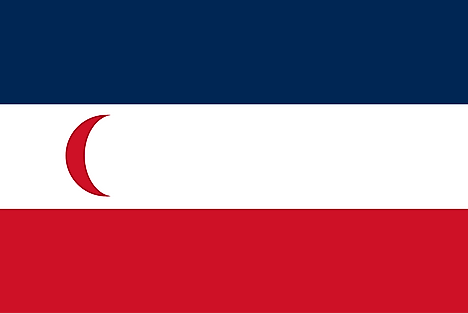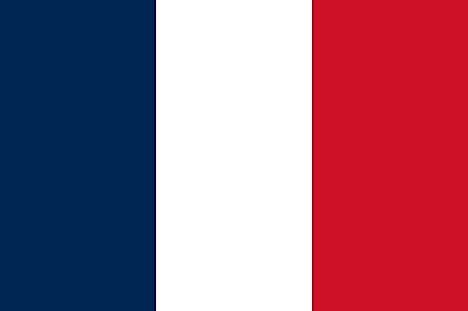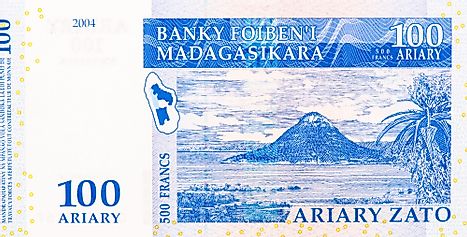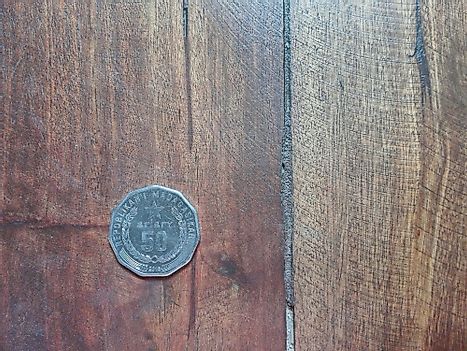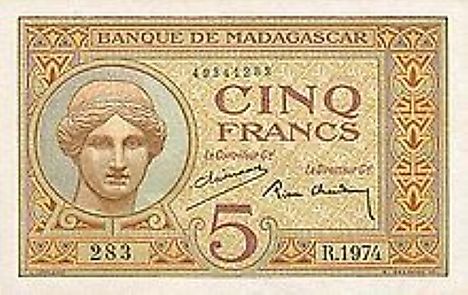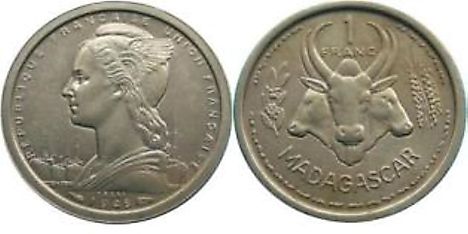Flags, Symbols, & Currencies of Madagascar
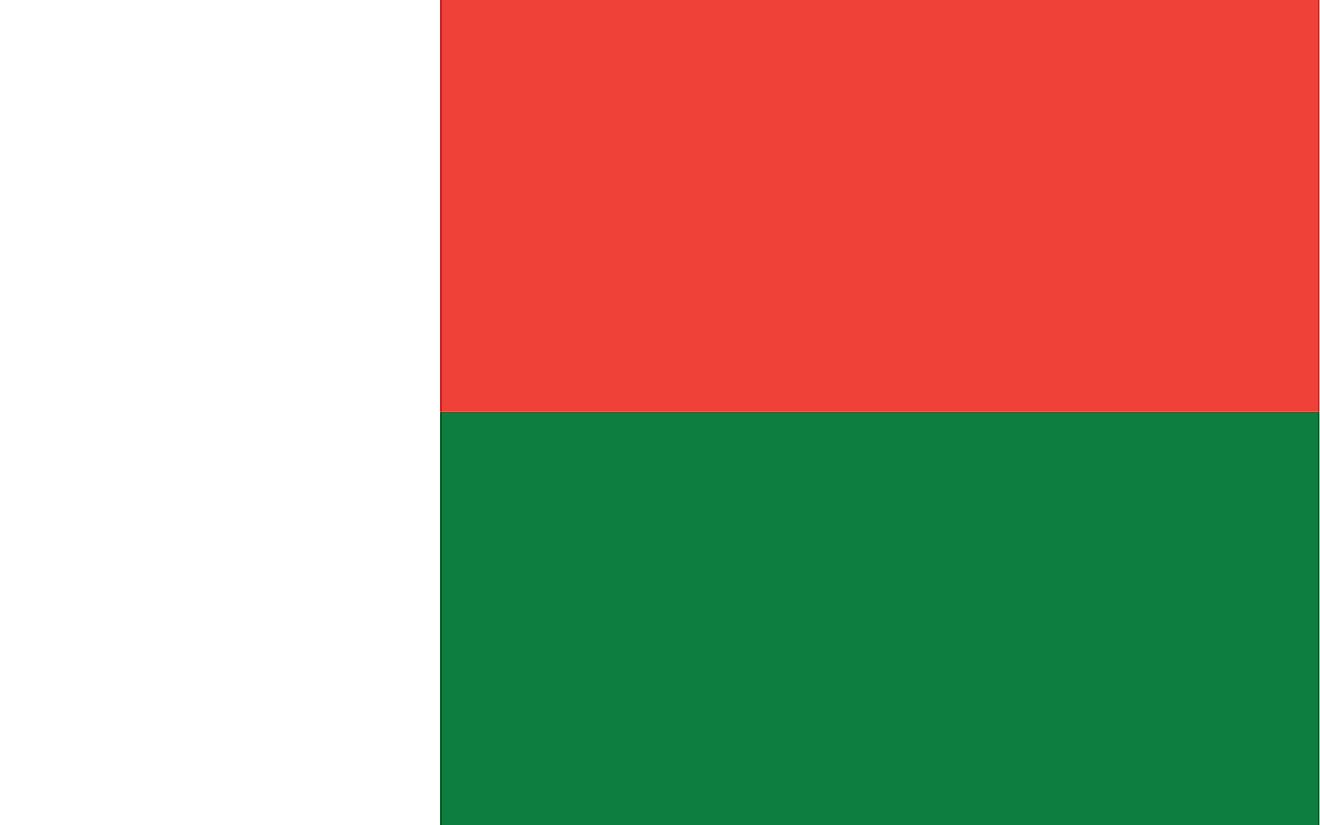
Design Of Madagascar’s Flag
The Madagascar flag was officially adopted on October 14, 1958. it reflects the original colors of the ancient Kingdom of Madagascar, and green is reflective of the country's former peasant class (the Hova).The flag of Madagascar is a tricolor. It has two horizontal bands and a vertical band. The latter is white in color and located on the hoist side of the flag. The horizontal bands are of red and green colors.
Meaning Of The Colors And Symbols Of The Flag Of Madagascar
The colors used in the flag represent the tradition, history, and culture of the country. The Merina Kingdom of Madagascar that ruled over the region prior to colonization by France used red and white as the traditional colors. These two colors were used in the flag of Queen Ranavalona III, one of the monarchs of the Merina kingdom. Thus, the use of these colors in the present-day flag of the country represents the nation’s history and the ethnic origin of the Malagasy people who arrived from southeast Asia. The colors are thus shared with the flag of Indonesia. The green color used in the flag represents the Hova people of the country who are the biggest class of peasant commoners. The Hova community is well-known for its important role in the independence movement of Madagascar.
History Of The Flag Of Madagascar
The national flag of the country was adopted on October 14, 1958, prior to the country’s independence in 1960. Prior to the present-day flag of Madagascar, the French tricolor flag was used in the nation from 1896 to 1958. It was a vertical tricolor of blue, white, and red. Prior to the 19th century, Madagascar was mostly divided into several small sociopolitical zones ruled by different rulers or groups. In the 19th century, however, most of the island was under the rule of the Kingdom of Madagascar. In 1897, the French defeated the Merina rulers of Madagascar and established a French colony in the region. In 1960, the colonial rule ended and Madagascar emerged as a free nation.
Symbols of Madagascar
National Coat of Arms of Madagascar
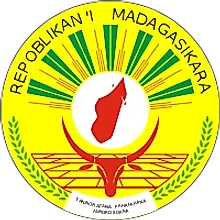
The national seal of Madagascar was adopted in 1998. It contains a red map of the island set in a white circle with the head of a red Zebu below. Green and red rays emanate above the white disc, representative of the sun. Above the red and green rays are the Malagasy words REPOBLIKAN'I MADAGASIKARA (Republic of Madagascar). On the lower half of the circle is the Ravenala (Madagascar plant) and the motto:TANINDRAZANA - FAHAFAHANA - FANDROSOANA ("Homeland - Liberty - Development")
National Anthem
- Anthem Title: Ry Tanindrazanay malala ô! (Oh, Our Beloved Father Land)
- Music composer: Nobert Raharisoa
- Lyricist: Pastor Rahajason
- Date of Adoption: 1959
The national anthem of Madagascar is known as Ry Tanindrazanay malala ô! (Oh, Our Beloved Father Land), officially adopted by Madagascar's parliament on April 27, 1959. The anthem,'s lyrics were written by Pastor Rahajason and set to music by Nobert Raharisoa. Ry Tanindrazanay malala ô! is similar to a march and meant to be a nation's hymn. It focuses on gratitude to God and calls people to unite and pledge their loyality to the nation.
Ry Tanindrazanay malala ô!
Ry Tanindrazanay malala ô!
Ry Madagasikara soa.
Ny Fitiavanay anao tsy miala,
Fa ho anao, ho anao doria tokoa.
Chorus
Tahionao ry Zanahary
'Ty Nosindrazanay ity
Hiadana sy ho finaritra
He! Sambatra tokoa izahay.
Ry Tanindrazanay malala ô!
Irinay mba hanompoan'anao
Ny tena sy fo fanahy anananay,
'Zay sarobidy sy mendrika tokoa.
Ry Tanindrazanay malala ô!
Irinay mba hitahian'anao,
Ka Ilay Nahary 'zao tontolo izao
No fototra ijoroan'ny satanao.
Oh, Our Beloved Father Land
Oh, beloved land of our ancestors!
Oh beautiful Madagascar.
Our love for you will never end,
And will remain forever loyal to you.
Chorus
Bless, oh Creator,
This island of our ancestors
May it have joy and happiness.
And may we be truly happy.
Oh beloved land of our ancestors!
We wish to serve you
With our body, heart and soul.
which are precious and dignified.
Oh beloved land of our ancestors!
We pray that you be blessed,
By the Creator of this world
who is the foundation of your existence.
The Currency of Madagascar is the Malagasy Ariary
Madagascar's financial sector is made up of 11 banks and several financial establishments and micro-finance institutions. Its currency has fairly stabilized over the last ten years indicating good tidings ahead. The official currency of Madagascar is called Ariary. It has the ISO standard code of MGA and is identified by the symbol “Ar.” The currency is subdivided into 5 iraimbilanja and is one of the two non-decimal currencies in circulation in the world today with the other being the Mauritanian ouguiya. The currency’s name was derived from pre-colonial currency, silver dollar. Iraimbilanja literally translates to “one iron weight” named after fifth worth of an ariary old coin. Malagasy Ariary replaced the franc as Madagascar’s official currency on January 1, 2005.
Coins
In 1965, 1 and 2 franc coins were issued followed by the 5 franc coin which was equivalent to 1 ariary in 1966. 10 and 20 franc coins equivalent to 2 and 4 ariary respectively were released in 1970. By 1978, 10 and 20 ariary coins were in circulation followed by 5 and 50 in 1992. By 2003, most of the 1 and 2 ariary coins did not bear any franc denominations.
Banknotes
The first banknotes were introduced in various franc denominations ranging from 50 to 5,000 in 1961 by the Institut d’Emission Malgache. The actual notes were overprint of the earlier notes that were provided by the Bank of Madagascar and Comoros which issued ariary denominated banknotes. The Central Bank of Malagasy Republic which was established in June 1973 took over the printing and circulation of banknotes leading to the issuance of new notes in 1974 in the same denominations as the earlier ones. 500 and 5000 ariary banknotes were introduced in 1993, with several other denominations including 100, 200, 2000, and 10,000 introduced in 2003-2004.
Historical Currencies of Madagascar
Malagasy Ariary was first circulated in 1961 to replace the Malagasy franc at an exchange rate of one Ariary for 5 Malagasy francs. Coins and banknotes at the time were issued in both the denominations of franc and ariary. Iraimbilanja was worth a fifth of one ariary and thus equal to the franc. At first, the franc coins and banknotes were more popular compared to the ariary. However, in 1978 more high-value coins were issued in the denomination of ariary alone. In 1993, ariary became even more valuable with the release of 500 and 5,000 ariary banknotes alongside 2,500 and 25,000 franc banknotes. The ariary denominations printed in July 2003 came prominently while the franc denominations were in small prints. Lower denominations of ariary coins were also designed, making ariary more popular compared to the franc. On January 1, 2005, the franc was officially replaced by Malagasy Ariary as the national currency.
